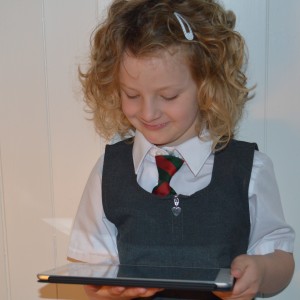To celebrate Music Education Solutions® 10th Birthday, we’re posting our top ten tips for music teaching each month during 2018! This month’s list is compiled by David Ashworth.
- Why use apps? Apps usually upload much more quickly on tablets compared with software on computers, they rarely crash, and are intuitive to use. Although Apps are becoming more expensive, they are still far cheaper than most music software computer programmes, and the added bonus of using iPad apps is that the built in microphones, speakers and camera ensure that you have everything that you need to create, record and play music!
- Getting the best and most from your apps. When considering apps for classroom use, try to look at them with more of an ‘agnostic’, open minded approach. The app designers will have produced their apps with certain uses in mind, but also consider how they might best work for you in supporting your curriculum work. How might the features they offer support your teaching and learning needs? The examples which follow provide some pointers to thinking and planning in this way…
- Bloom is a generative music application for iOS created by Brain Eno and Peter Chilvers. The software plays a low drone and touching the screen produces different tones, which play in a loop. The fact that it provides an instant display on the screen makes it ideal for working with graphic notation. It can also be used for live improvised performance and its use of simple modal scales makes it a great app for aural work with older students. The fact that it is easy to play and produces beautiful sounding melodic lines makes it an ideal application for use with younger students and in some SEND contexts.
- SampleToy the first thing to note is that you can ignore the word ‘toy’ in this app’s name. What makes it so useful is the speed at which you can record and play back a sampled sound. A great way of bringing more interesting unusual sounds into the classroom which are often beyond the reach of students in terms of affordability and playability.
- iReal Pro is a real time-saver. Simply type in chord progression for any song to instantly create an accomplished sounding backing track comprising guitars, bass, keyboards, drums etc. The songs can be played back in any key and at any tempo. Great for rehearsal, improvising, composing and performance activities. The tracks can also be played back in different musical styles. So students can get a feel for stylistic conventions and also have a lot of fun devising interesting cover versions of well known tunes. I find Scarborough Fair as a reggae number particularly engaging!
- MiniSynth 2 from Yonac is a simple virtual synthesiser which gives students the chance to build and use their own synthesiser sounds. This can be an excellent independent learning tool for those are keen to explore music technology at a fairly basic level. They can experiment with changing oscillator settings, filters and effects to design and save configurations for use in subsequent music making.
- Air Vox makes use of the iPad’s built in camera to detect hand motion gestures which can be translated into sounds. Moving the hand up and down vertically over the iPad changes the pitch of notes, played from a chosen scale. The other hand can optionally move horizontally to control the volume or tone of the sound output. This is a great app for use in live performance involving dance or movement. It is also particularly useful for SEND students with limited motor control.
- GarageBand is one of the all time best apps for music makers and the basic version is part of the standard iPad suite of apps. To name just two of the features, GarageBand’s ‘Smart’ instruments can be used for writing diatonic chord progressions in any key and the Smart Drums uses a unique matrix grid, allowing users to create convincing drum patterns where the degree of complexity and relative dynamic levels can be easily controlled.
- Thumbjam is one of many ‘virtual instrument’ apps available for the iPad. Where it scores significantly over many of its rivals is in the way it allows the user to manipulate the tablet interface to add elements of expressive control to the triggered sounds. Wobbling the finger on a note will add a degree of vibrato whilst tiling the tablet will control the volume and other settings. There are a range of articulation settings and a large choice of instruments and scales which enable the user to play musical melodies and harmonies with considerable subtlety and nuance.
- Although you and your students will find apps quite easy to use, it is often a good idea to enlist technical support from the experts in your school. Storage/retrieval of students work on iPads is not as straightforward as it is on computers, so find out what systems are in place to facilitate this in your school. Your tech support should also be able to advise on buying and installing apps across a range of devices. Finally, don’t forget your students! Some of them will be way ahead of the game – and may be a useful further source of advice on getting the most from your apps….


Copyright © 2021 Music Education Solutions® Limited. All Rights Reserved.

